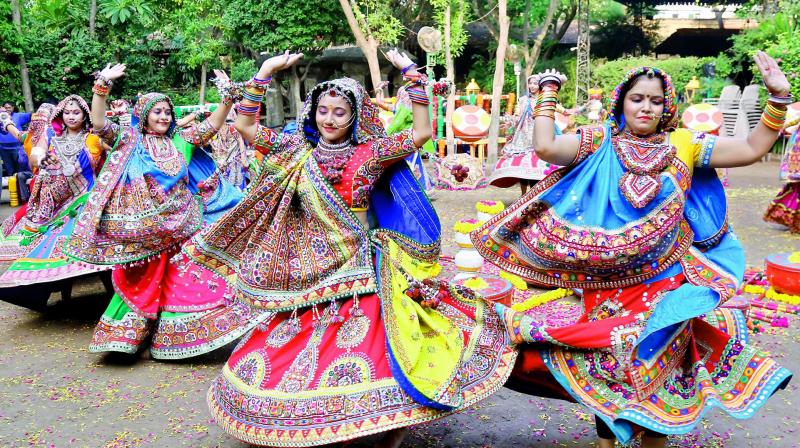Festivities from folklore

Festivals get even more colourful when people from different communities come together to celebrate. Navratri, or Durga Puja, is celebrated with as much fervour in many parts of India as it is in Hyderabad. Elaborating on the Telugu community’s celebrations, artist Sravanthi Juluri says, “We don’t worship Goddess Durga’s idol, instead we worship the kalasha for nine days. It signifies nine different forms of the goddess — Laxmi, Saraswati, Gauri, etc. What more, each day has a different significance and we mark it with a different colour. We make food in that colour and also decorate the place with flowers of the same colour.”
While the Telugu community worship the kalasha, the Bengali community’s celebration is all about themes and idols of the goddess and her children. To explain this further, Shyamoli Bose from the Hyderabad Bengali Samitee says, “The five-day festivity is of utmost importance. But the most auspicious time is when Ashtami meets Navami — when we perform Sandhi puja. We light 108 diyas and place 108 lotuses which signify the goddess’ third eye.”
Interestingly, she adds, “When everyone is celebrating Dasara with great enthusiasm, for us it’s a day of sadness. It is the day when Maa Durga is going back to the Himalayas and we bid her adieu by playing with sindur (where married women apply vermilion on the each other’s foreheads and cheeks).” When talking about Navratri, one can’t miss these two communities which have very similar ways of celebrating yet are different in their own way — the Marwaris and the Gujaratis.
It’s quite well-known that the Gujaratis play garba and dandiya during this time but little do people know that they dance around a garbi at their home first. “We place a garbi, which is a decorated matka and within lies a diya. After puja every day in the evening, ladies dance around the garbi and that’s why the dance is called garba,” says Zeny Momaya, who organises dandiya and garba events in the city.
People from the Marwari community as well fast and indulge in garba and dandiya in the evening. However, they also follow another age-old tradition. “An important tradition that we follow from our grandmothers’ times is that apart from the morning puja, from the first day, we put wheat in a new pot and place it in a corner for the entire duration and water it. By the last day, it turns into wheat grass and we use it for puja on Dasara,” shares Madhu Jain from the Deepshikha Mahila Club.

